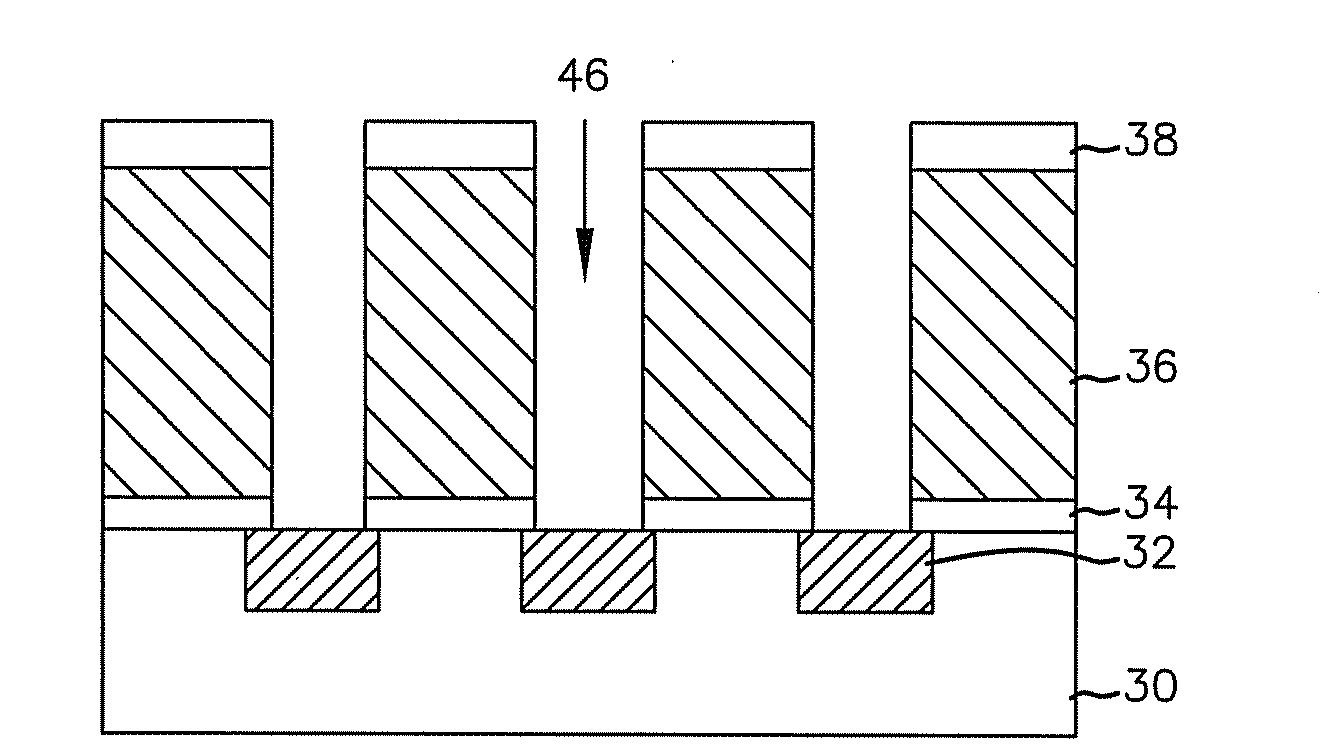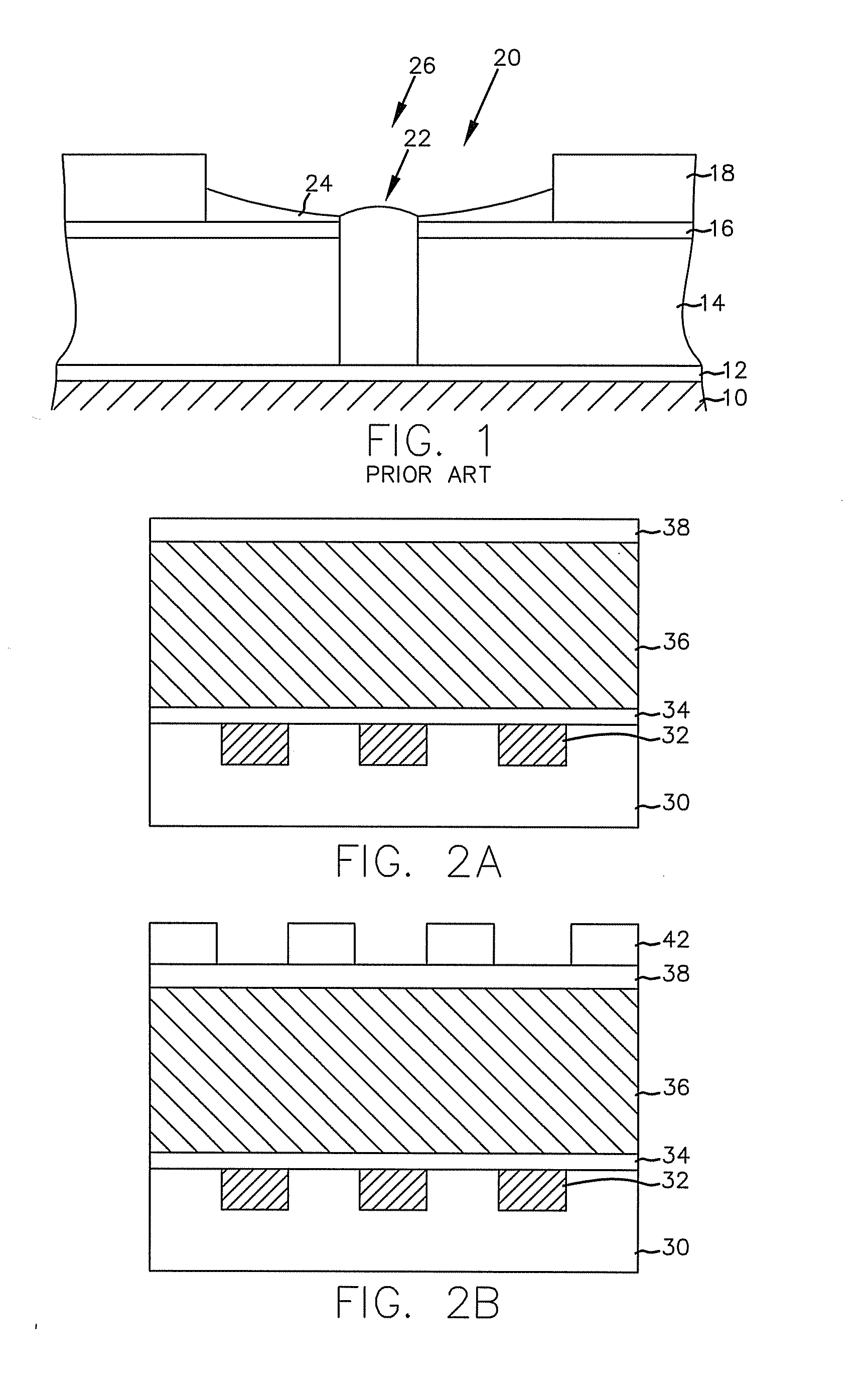Poly silicon hard mask
a technology of polysilicon and hard mask, which is applied in the direction of semiconductor devices, semiconductor/solid-state device details, electrical apparatus, etc., can solve the problems of easy damage to low-k dielectric materials, difficult to meet escalating requirements, and difficult handling of low-k materials such as bcb, etc., to reduce the contamination of etching chamber metals
- Summary
- Abstract
- Description
- Claims
- Application Information
AI Technical Summary
Benefits of technology
Problems solved by technology
Method used
Image
Examples
Embodiment Construction
[0019]In one embodiment, the disclosure relates to using polysilicon as hard mask in place of, or instead of, the metal hard mask layer. Polysilicon has an etch rate much less than the etch rate of the dielectric layer thereby providing excellent selectivity as the hard mask layer. There is no metal contamination problem with polysilicon which plagues the prior art production methods. The ability and knowledge of patterning polysilicon is well developed. Polysilicon minimizes low-k damage by blocking energetic ions from impinging onto and penetrating into the low-k film perpendicularly and shifts the resist strip step from the end of the patterning sequence to before the dielectric etch step.
[0020]FIGS. 2A to 2E are cross-sectional diagrams showing an exemplary process according to an embodiment of the disclosure. As shown in FIG. 2A, a semiconductor substrate 30 comprises a plurality of metal wire structures 32, a dielectric separation layer 34 covering the metal wire structures 32...
PUM
| Property | Measurement | Unit |
|---|---|---|
| temperature | aaaaa | aaaaa |
| temperature | aaaaa | aaaaa |
| dielectric constant | aaaaa | aaaaa |
Abstract
Description
Claims
Application Information
 Login to View More
Login to View More - R&D
- Intellectual Property
- Life Sciences
- Materials
- Tech Scout
- Unparalleled Data Quality
- Higher Quality Content
- 60% Fewer Hallucinations
Browse by: Latest US Patents, China's latest patents, Technical Efficacy Thesaurus, Application Domain, Technology Topic, Popular Technical Reports.
© 2025 PatSnap. All rights reserved.Legal|Privacy policy|Modern Slavery Act Transparency Statement|Sitemap|About US| Contact US: help@patsnap.com



